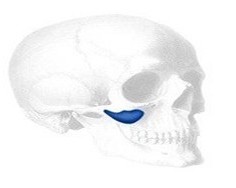Facial wasting is a very specific condition of the face in which specific areas of fat are resorbed and, in its severest form, is unique to the
HIV patient taking retorviral medication. Nobody knows exactly why fat from the faces specifically goes away on people taking anti-HIV drugs, but a significant percentage of such patients will experience it depending on their particular retroviral medication regimens. It seems to occur particularly in men of low body weight who are over the age of forty.
Facial wasting can present in a variety of appearances from subtle to very dramatic, based on the amount of fat under the skin that has been lost. Patients typically present with sunken-in cheeks, very prominent cheek bones not covered by the usual fat layer, and hollow temples. This also creates loose facial skin due to the lack of underlying fullness.
Facial wasting can be treated by a variety of plastic surgery methods. The most popularized is the injectable approach using Sculptra or other long-lasting fillers such as Radiesse. While injectable fillers definitely provide a benefit, I don’t find them to be the best value, given what they cost and the repeated treatment sessions necessary. In my experience, several surgical options are more effective with injectable fillers or fat grafts used to supplement them.

But augmentation of the bony cheek and submalar area can treat the full extent of the facial wasting. This requires soft tissue augmentation using an injectable approach to fill in around the edges of the implants and beyond. Often there can be a step-off or obvious demarcation from the implant to the surrounding skin in cases where the facial wasting is quite severe. In more mild cases, this may not be necessary. Fat injections are very versatile but they require having some subcutaneous fat tissue into which to be placed. In severe facial wasting I have used dermal-fat grafts, harvested from the abdomen, to be placed below the cheek through a nasolabial incisional approach.
When the facial wasting is associated with loose skin, a modified facelift can also be very helpful. Changing the facelift to more of a jowl-neck tuck-up helps stretch out the loose cheek and facial skin. When done in combination with submalar cheek implants and fat grafts, some really nice facial improvements can be achieved.
Dr. Barry Eppley
Indianapolis, Indiana


